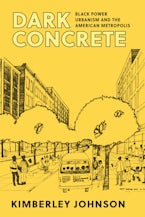Dark Concrete is about how the Black Power movement reshaped urban politics in the United States - from expectations to practices. Although the national and international dimensions of the Black Power movement are often focused on, Kimberley Johnson looks at the movement at the local level, highlighting Newark and East Orange, New Jersey, and Oakland and East Palo Alto, California, and three policy areas: housing, education, and policing. She examines how Black Power Urbanism had its own local meanings as it was defined by local activists, neighborhood residents, parents, tenants, and others who sought to repair cities and particularly black neighborhoods that were shattered due to urban renewal and highway construction, as well as ongoing political and economic disinvestment. Dark Concrete depicts how local conditions influenced the emergence of the Black Power movement and, in turn, the ways in which these local movements reshaped urban politics, institutions, and place.

